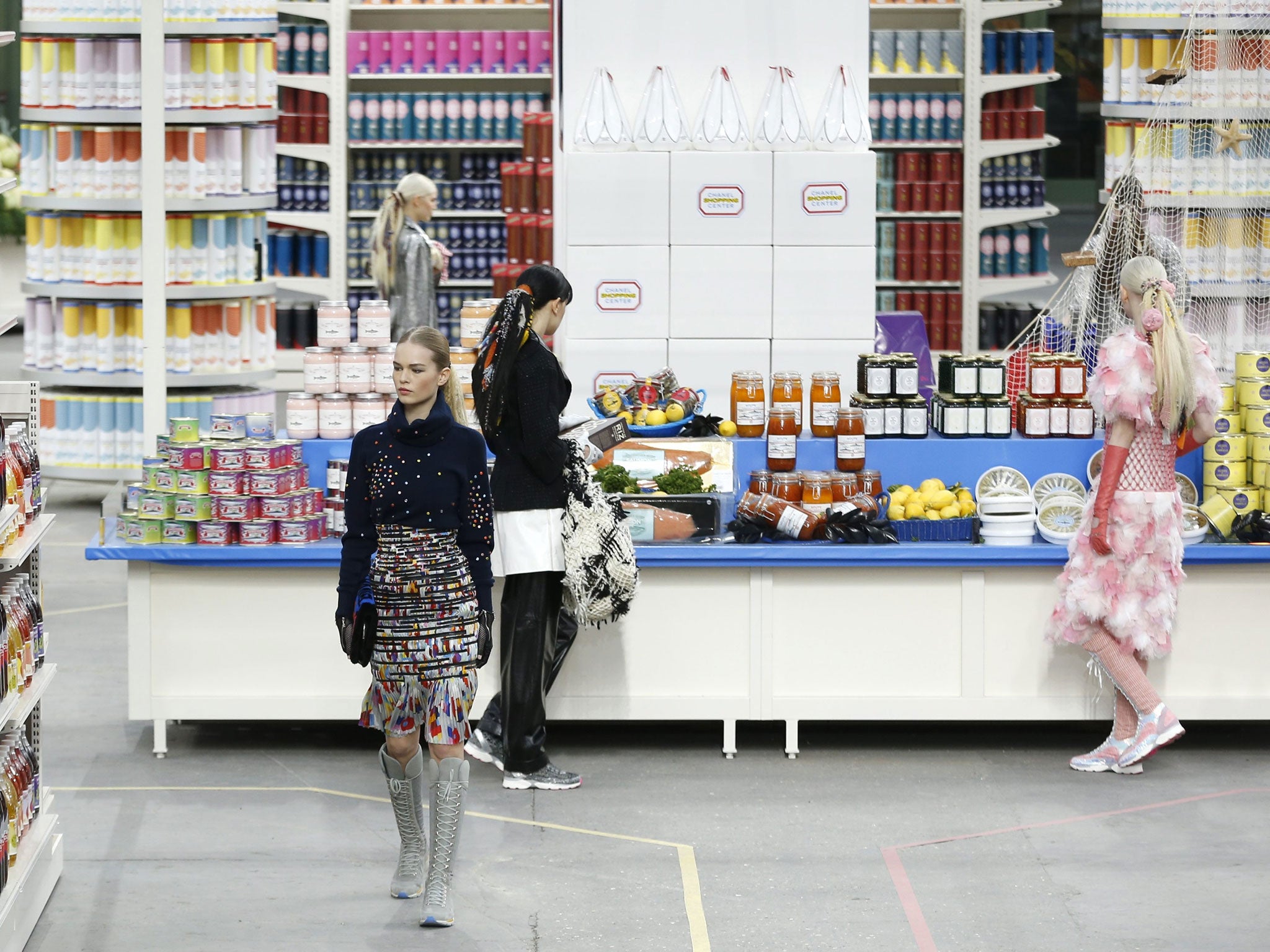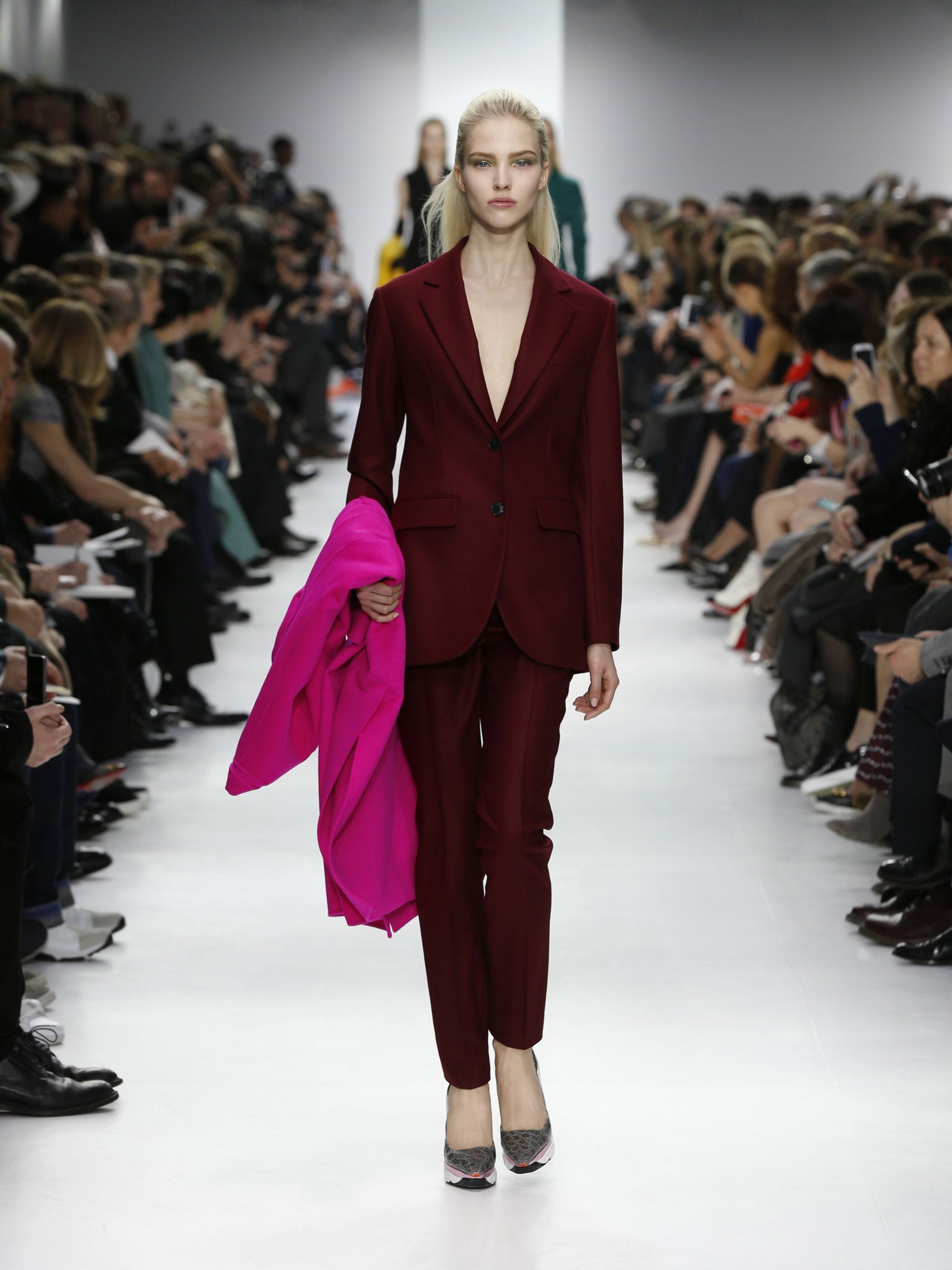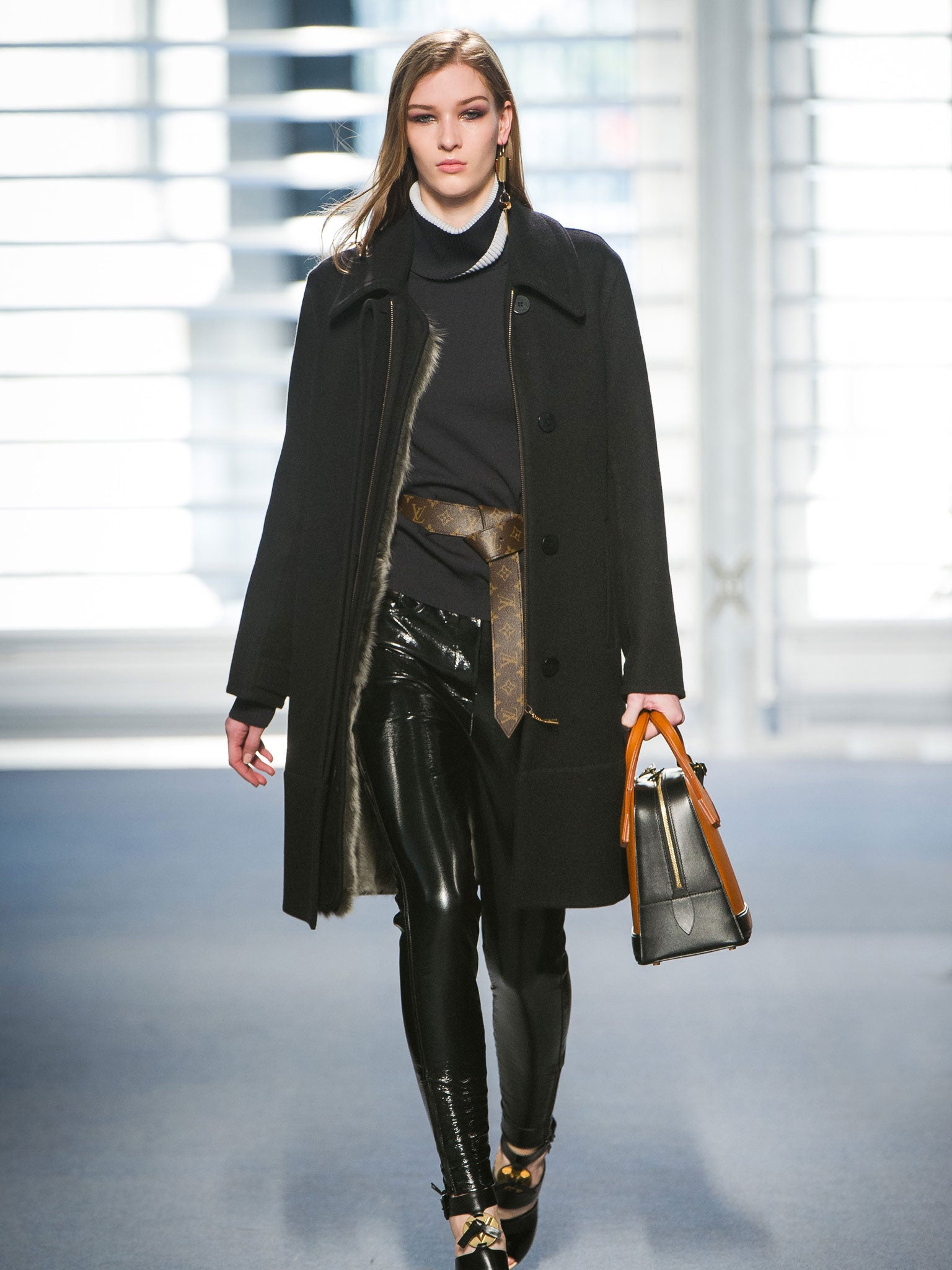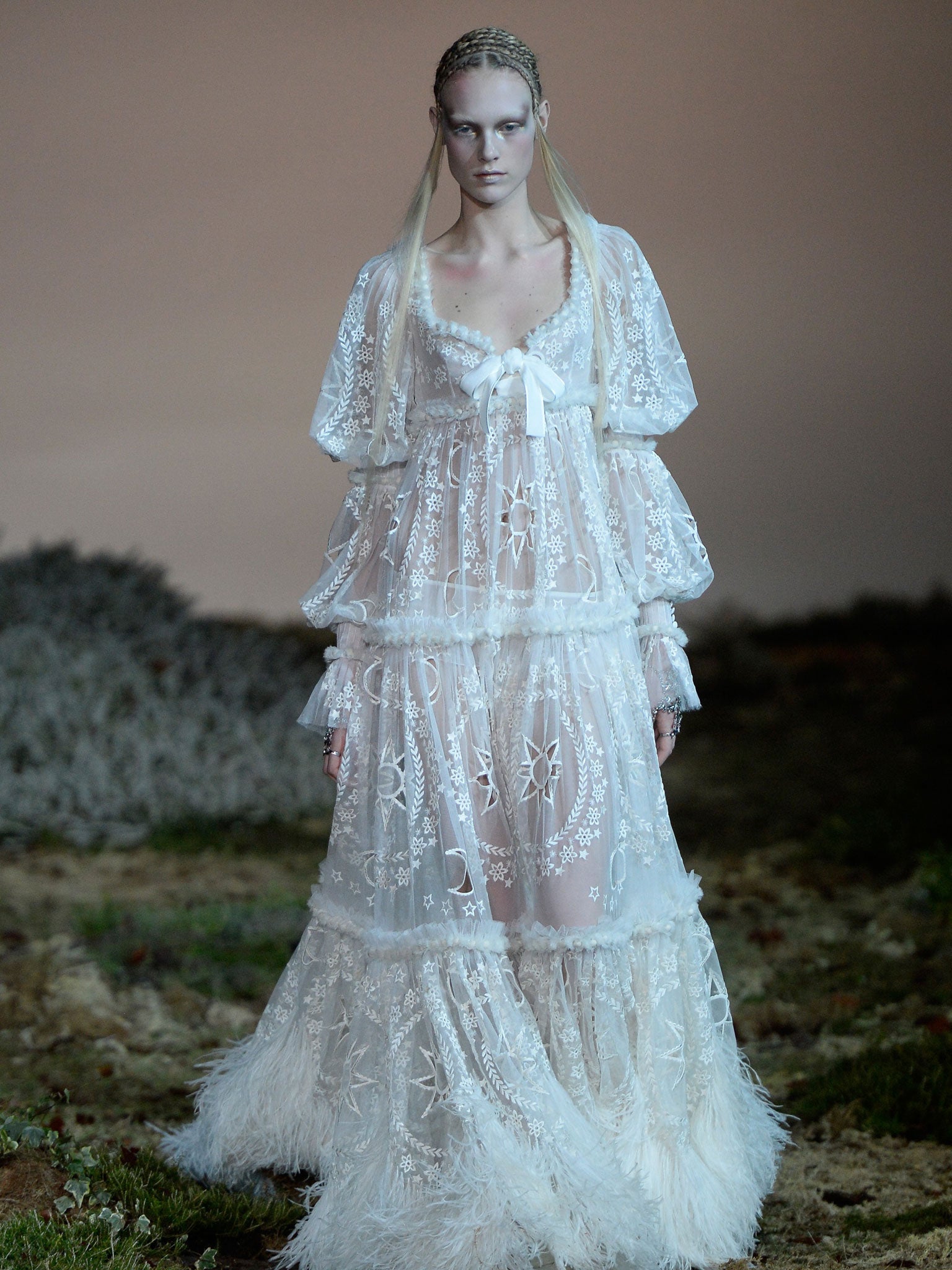Paris Fashion Week: From Chanel to Louis Vuitton, it's going wild in the aisles
The Paris autumn/winter 2014 collections were a triumph of commerce over creativity. But it was the exceptions to that rule that made the city sparkle

Your support helps us to tell the story
From reproductive rights to climate change to Big Tech, The Independent is on the ground when the story is developing. Whether it's investigating the financials of Elon Musk's pro-Trump PAC or producing our latest documentary, 'The A Word', which shines a light on the American women fighting for reproductive rights, we know how important it is to parse out the facts from the messaging.
At such a critical moment in US history, we need reporters on the ground. Your donation allows us to keep sending journalists to speak to both sides of the story.
The Independent is trusted by Americans across the entire political spectrum. And unlike many other quality news outlets, we choose not to lock Americans out of our reporting and analysis with paywalls. We believe quality journalism should be available to everyone, paid for by those who can afford it.
Your support makes all the difference.The single overriding image of the autumn/winter 2014 Paris collections? Karl Lagerfeld’s sarcastic supermarché sweep at Chanel, where thousands of specially manufactured household goods formed an extravagant everyday backdrop to a collection of clothes for the hyper-rich everywoman. It was sharp, biting, even savage, and Lagerfeld’s tongue was firmly in his ever-chic cheek.
For many, the cynicism was unpalatable. This is Paris, after all, and Chanel to boot. How could you reduce the output of one of the last remaining bastions of haute couture, in the true fashion capital of the world, to nothing more than cold, calculated product?
Because Karl Lagerfeld is a realist, a pragmatist. He understands the mechanics of modern society. Last season, he erected an art gallery in the Grand Palais. He wasn’t saying his wares were art, but commenting on the artistic bent that seemed to have infected the whole of fashion. This time, his “Chanel Shopping Centre” underlined the commerciality and accessibility of the city’s collections as a whole. It was rampant consumerism, commodity fetishism. Karl Lagerfeld as Karl Marx.
Lagerfeld’s romp was satisfying – the clothes, witty and pithy, were great, too. They said something. But elsewhere, that taste for the hard sell was frequently coupled with a soft touch as far as design goes. It wasn’t a vintage season.
Instead, it was a season that, by and large offered clothes you might want to wear, and even buy, but that didn’t get your pulse racing. There wasn’t much thrill-seeking or forward-thinking. There was great clothing, but not that much great fashion.
At times, this autumn/winter season felt a little like cramming your face full of doughnuts in a supermarket. You knew it wasn’t good for you, but it satisfied a craving. At least in the short run.
Nevertheless, the clothing that designers offered, with their clean, accessible lines – ideal for registering in online packshots and two-dimensional catwalk images – failed to intrigue and entice. Take Saint Laurent, a truly two-dimensional fashion show if ever there was one. It’s easy to imagine these clothes filtering on to shop rails, in part because they so resemble the stuff we already see hanging there. But do they really entice curiosity? Are you really compelled to get inside them and figure them out? No. They’re flat, somewhat lifeless. You don’t need to see anything more. They deliver their basic message at a cursory glance.
There was a general malaise to Paris fashion this season. A lethargy. But there were shining peaks, a clutch of designers who made you look again at what they offered. Some were unexpected, such as Riccardo Tisci’s Givenchy show. The leitmotif of his recent work has been sloganed and printed sweatshirts – glorified band T-shirts really, flimsy foils for graphics without much design, the very definition of the two-dimensional hard sell.

This season, the breadth of Tisci’s offering – from billowing chiffon dresses to slick tuxedo suiting and slender beaded evening dresses – felt exhilarating. No pun on the butterfly imagery he used, but it felt like Tisci was spreading his wings. Givenchy showed couture until a few seasons ago, and there was a couture feel to the distinctly delineated dressing – day, cocktail, evening. To some eyes, that day-night demarcation feels old- fashioned. However, it meant that Tisci offered a truly rounded wardrobe, and a beautifully designed one at that.
Raf Simons is also expanding his remit at Dior. If his first clutch of collections grappled with concepts of what Dior was, asserting his adeptness at tripping through the Dior archive, this season he began to use those ideas to push the house forward.
This wasn’t about a broad wardrobe sweep: the focus was strictly on daywear, specifically tailoring. A trademark of Simons’ tenure at Jil Sander – and in turn a fundamental facet of the Dior canon – tailoring has been a highlight, but never before the sole riffing-point it was for Simons’ strongest ready-to-wear outing under the label. A tight, streamlined showing of modern clothes, for a modern woman, from a modernised house of Dior.
“Modern” is a word intoned reverently around Nicolas Ghesquière, formerly the chief designer of Balenciaga, who this season took up the reins of artistic director at Louis Vuitton.
If Vuitton shows of the recent past were theatrical set-pieces, Ghesquière sought to strip down and pare back. There was a paucity of product on show, boxy bags like miniature trunks hanging from straps beside clothes whose lines were forceful but not forced. These were clothes for living in, not just catwalking in. Perhaps part of his brief was to give a realism to the ready-to-wear aspects of the house. Or perhaps Ghesquière simply found a thrill in the idea of creating eminently real clothing.

“Functionality” was a word Ghesquière used again and again backstage – a hallmark of a house whose original purpose was to create luxurious but practical luggage for the European elite. And what’s the function of clothing if not to be worn?
That’s an idea you sensed a few designers tussling with, particularly those with an arty-farty bent. Haider Ackermann, for instance. This time, he ripped off the drippy drapery that has often choked the lines of his clothes. He was content to let coats, dresses and trousers be just that.
In abolishing extraneous straps and flaps, Ackermann highlighted the precision of his cut. There was a rigorous elegance to these clothes, although they seemed for the first time truly approachable.

There was nothing approachable about Alexander McQueen, where Sarah Burton ratcheted up the drama, the workmanship, the energy and the emotion. It was unwearable, sure, but an unbelievable experience to witness, one that managed to eke some feeling from an otherwise dry and tepid Paris.
Burton is canny, selling a collection in which several hundred pieces have been spun out from these intricate, hand-embroidered garments, few of which will ever make it into real life.
Burton and McQueen, however, trade on unreality. Their selling point is making you catch your breath and dream. It’s difficult to put a price on that.µ
Join our commenting forum
Join thought-provoking conversations, follow other Independent readers and see their replies
Comments